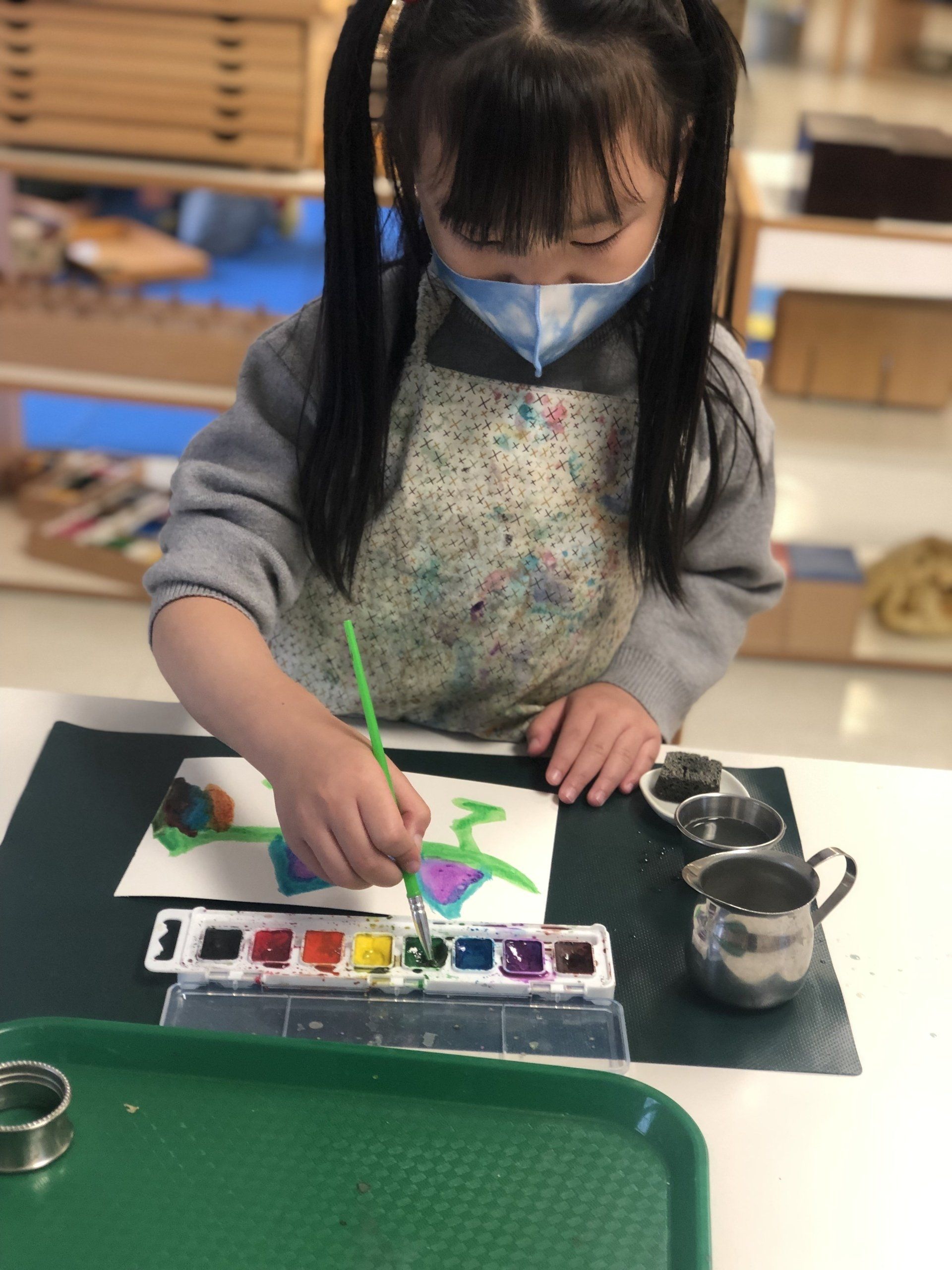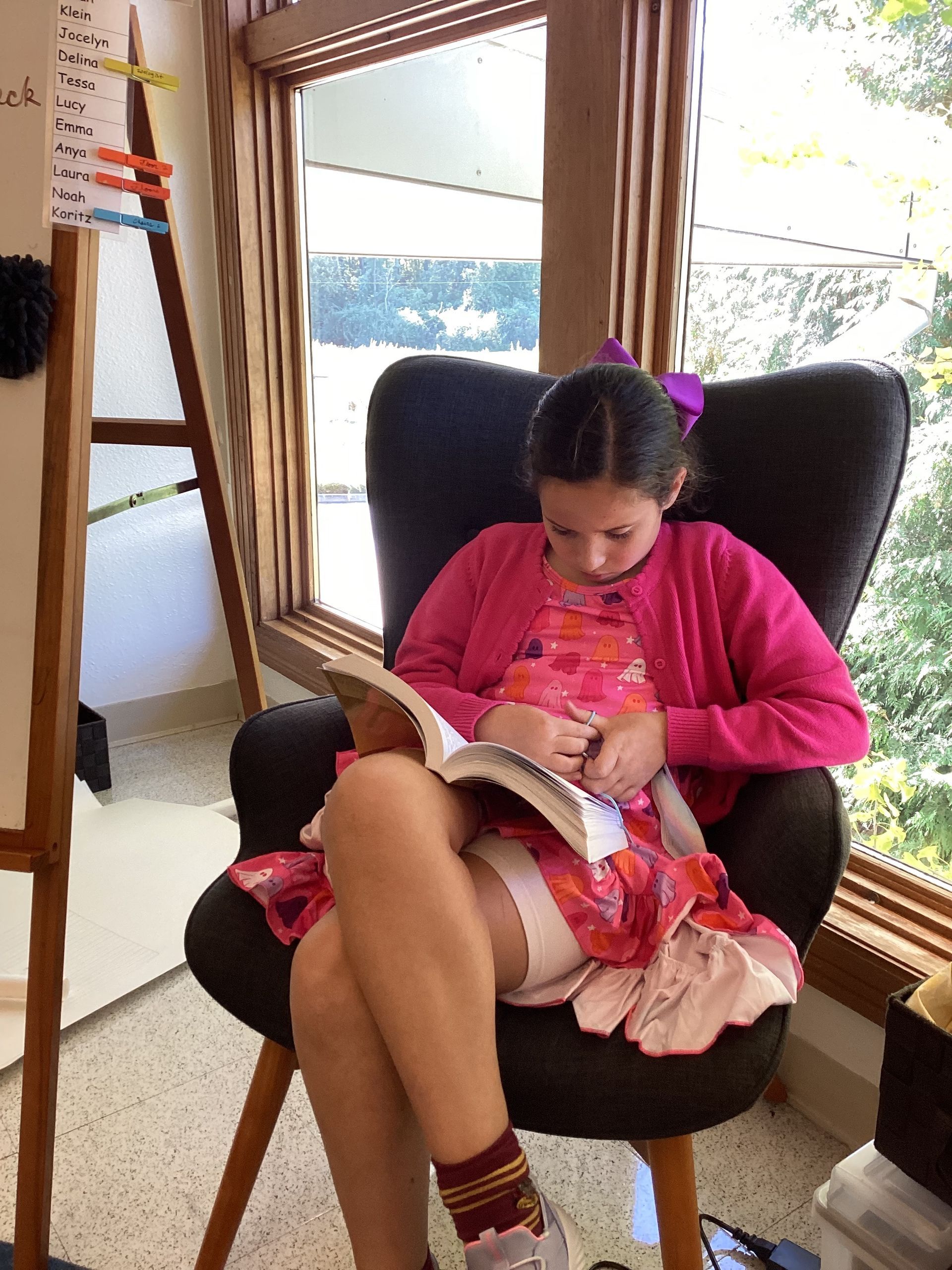"Imagination does not become great until human beings, given the courage and strength, use it to create."
—Dr. Maria Montessori
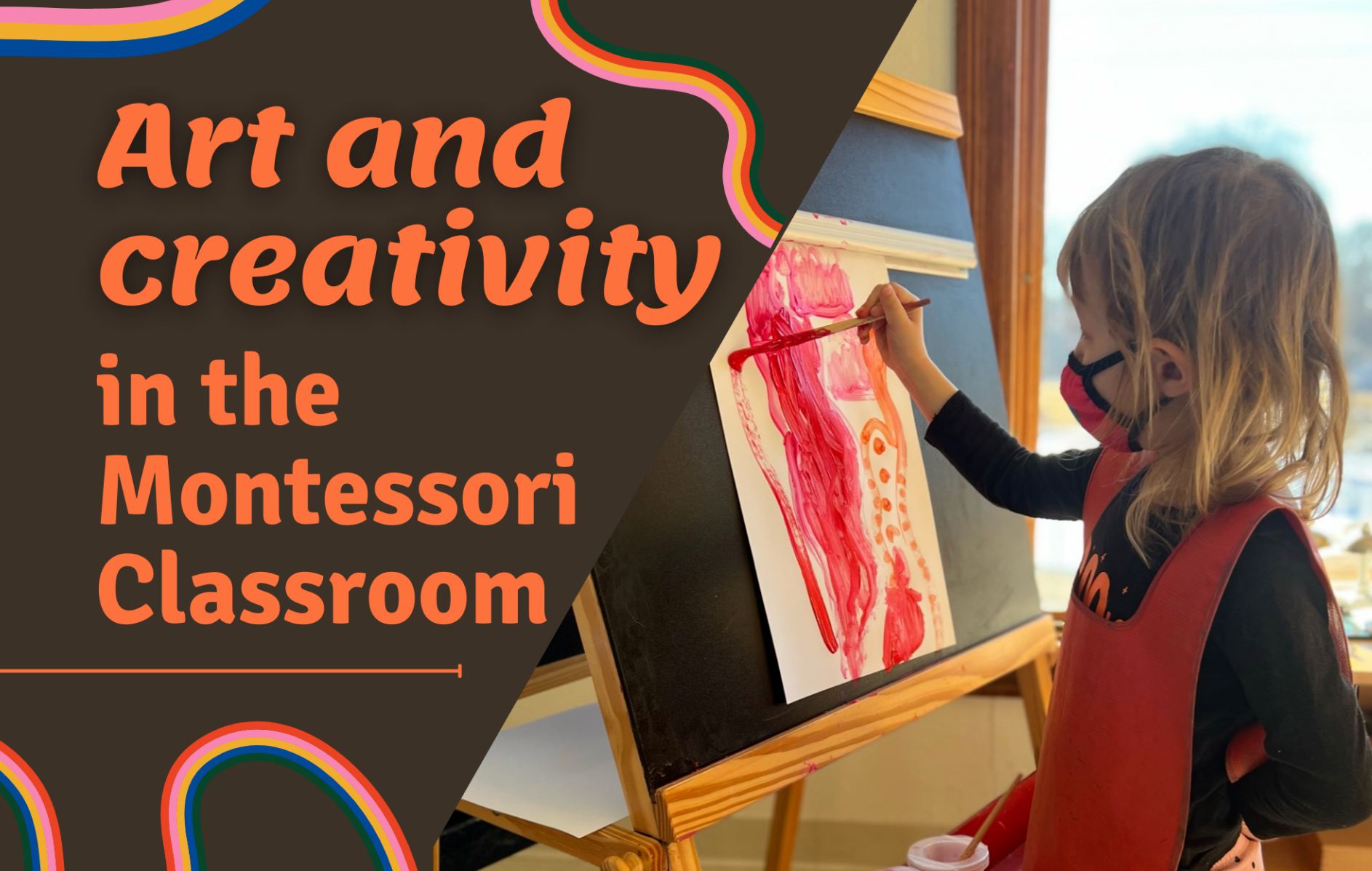
What is creativity?
Creativity is a difficult concept to define, and even more difficult to measure. A general understanding of creativity is that it is the ability to generate independent and novel ideas that can be used to solve problems or create new contributions.
A study published in 2019 by the Journal of Montessori Research suggests that creativity is not an intrinsic characteristic, but an ability that can be influenced by contextual factors. Several studies on creative ability have demonstrated the impact of educational context, such instructions from teachers, tasks and exercises, and classroom space. These factors have the potential either foster or suppress creativity development, according to these studies.
There are a number of traits of the Montessori environment that researchers identified as being potential contributing factors in terms of cultivating creativity. Many of the elements identified have been proven to be supporters of creativity in other studies as well. These factors include:
● Emphasis on independence and choice
● Physical differences in the classroom environment
● Flexibility in regards to time
● Focus on intrinsic motivation
● Opportunities for collaboration
● A sense of control over one’s work and activities
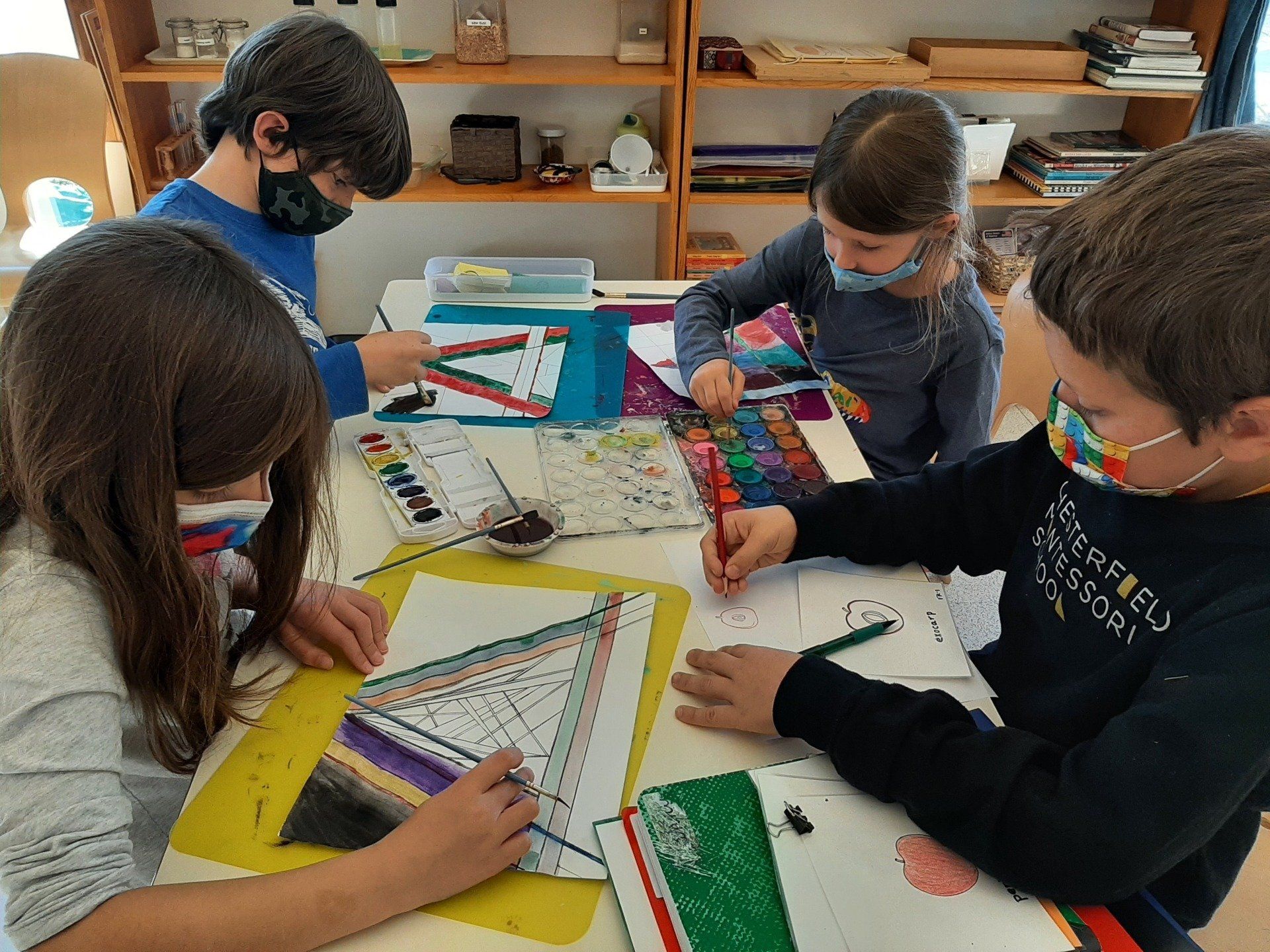
Practicing basic skills
The Montessori philosophy encourages freedom, within limits, and art is no different. Once a child has received an art lesson, they are free to do the activity on their own. This ensures that the child knows how to start the task, use the materials gracefully, and clean up after themselves.
As with all things Montessori, our art curriculum builds from simple to complex. The basic skills of cutting with scissors, using a glue stick or liquid glue, and the proper use and care of a paintbrush all translate into other areas of the classroom. For example, a child might paint their world map with watercolors or trace and cut the shapes in the geometric cabinet drawers out of colored construction paper. Coloring, cutting, and gluing are part of life in an active Montessori classroom and it’s important that the children learn to do so independently and with confidence.
Art activities that are available on the shelves range from very basic with minimal steps to longer, multi-step lessons. In Primary, children are building on these skills, gaining confidence and exercising their creativity in the art arena. In the Elementary Program, students begin thinking of their own art projects that coincide with the research they’re doing.
Music and Montessori
Numerous studies, along with the work of Dr. Montessori herself, have indicated that early childhood exposure to education in music and auditory sensory have overwhelmingly positive and powerful impacts on children.
Just as with other areas of study and skills that must be mastered, it appears that there is a sensitive period for learning music that ends prior to age 7. This means that while of course children have an ability to learn music after that age, they are in a prime position to master those skills earlier.
At CMS, students are practicing and engaging with music in a variety of ways. There are music bells in the Primary and Elementary classrooms, which students have the freedom to play during their work periods. Guides are always singing and teaching new songs to the class. Our lead guide for Lower Elementary, Ms. Rosie, taught the class one of her favorite songs, ‘It is time now,’ which we recorded and shared with families. Additionally, we regularly hold recitals for students to showcase to their families the songs, musical numbers, and dances they’ve been working on.
Curiosity and imagination
Gabriel Garcia Marquez, Nobel laureate author of novels such as Love in the Time of Cholera and One Hundred Years of Solitude, was a Montessori child. He once said, “I do not believe there is a method better than Montessori for making children sensitive to the beauties of the world and awakening their curiosity regarding the secrets of life.”
Rather than feeding children information we deem important, we spark their curiosity with stories - real stories about the wonders of our world - and provide them with materials that lead to self-discovery. The Great Lessons at the elementary level are a perfect example. The first Great Lesson teaches children about the beginnings of our universe in a wholly captivating manner. The children look forward to receiving this lesson at the beginning of each year, yet their developmental readiness allows them to glean something different each time. The teacher, in turn, can choose to expand the learning in any number of directions (the solar system, states of matter, rocks and minerals, etc.).
One common myth is that Montessori discourages imagination. This is simply untrue. Dr. Maria Montessori observed that young children prefer reality over fantasy, but imagination is something altogether different. In her book, To Educate the Human Potential, she said:
“Human consciousness comes into the world as a flaming ball of imagination. […] The secret of good teaching is to regard the children’s intelligence as a fertile field in which seeds may be sown to grow under the heat of flaming imagination. Our aim therefore is not merely to make children understand, and still else to force them to memorize, but so to touch their imagination as to enthuse them to their inmost core.”
To learn more about Montessori and creativity, please take a few minutes to watch this video. Award-winning Montessori educator Judi Bauerlein discusses the links between Montessori and creativity, highlighting thoughts from famous Montessori graduates, as well as connections between Maria Montessori’s work and what we now know about child development.


